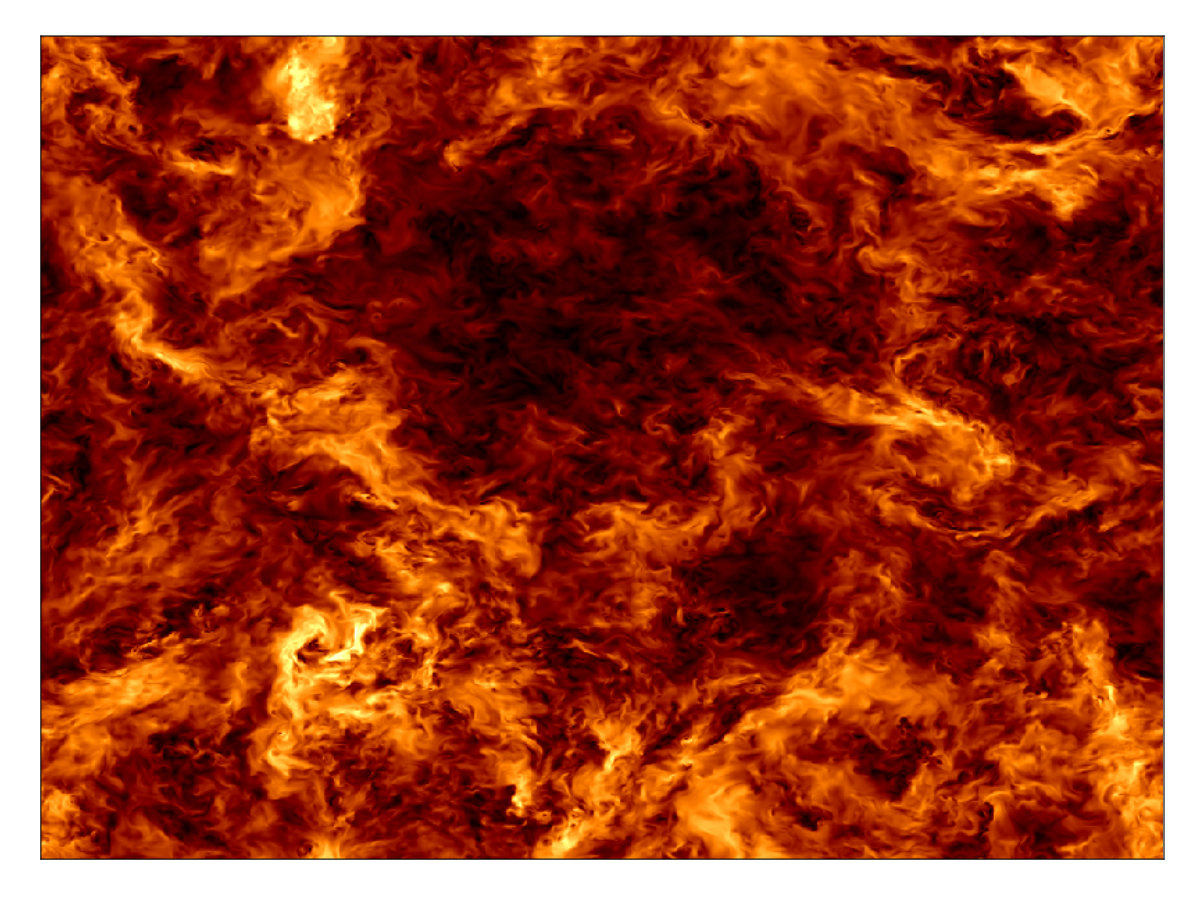B. Complex particles in a turbulent flow
These studies focus on non-spherical particles transported by turbulent flow. The main objective was to examine, in detail, from the point of view of their statistics, the dynamics of small complex particles immersed in turbulent flows. Two main aspects were explored: the flexibility of the particles through the use of flexible fibers and their interaction with the fluid structure in terms of transport and distribution by integrating spheroids into the turbulent flow. We used the pseudo-spectral DNS code LaTu to perform massive numerical simulations on local (Azzurra at UCA, CEMEF cluster, NEF at INRIA) and national (Jean-Zay at IDRIS) clusters.

Small spheroid transported by a fully developed turbulent flow
We found that translational and rotational motion are decoupled for small inertial spheroids. The translational motion can be described similarly to the motion of a sphere with a defined effective mass. At the same time, the rotational dynamics are more complex and depend on the specific shape of the spheroids. This is reflected in rotation rate statistics and concentration properties.

Small non-inertial fibers carried by a turbulent flow
We find that the dynamics most often resemble those of a rigid rod for small, inertial-free fibers. However, in sporadic and intermittent episodes, the fibers undergo violent buckling events, which are correlated with strong local compressions exerted by the local turbulent flow. Moreover, detailed statistical investigations reveal that flexibility also produces fiber misalignments, such as deviations in orientation statistics compared to the dynamics of a completely rigid rod. Our most salient observation is that the coupling between such flexible fibers and turbulence can be modeled phenomenologically in terms of various activation processes, both for the buckling rate and for the misalignment statistics.



